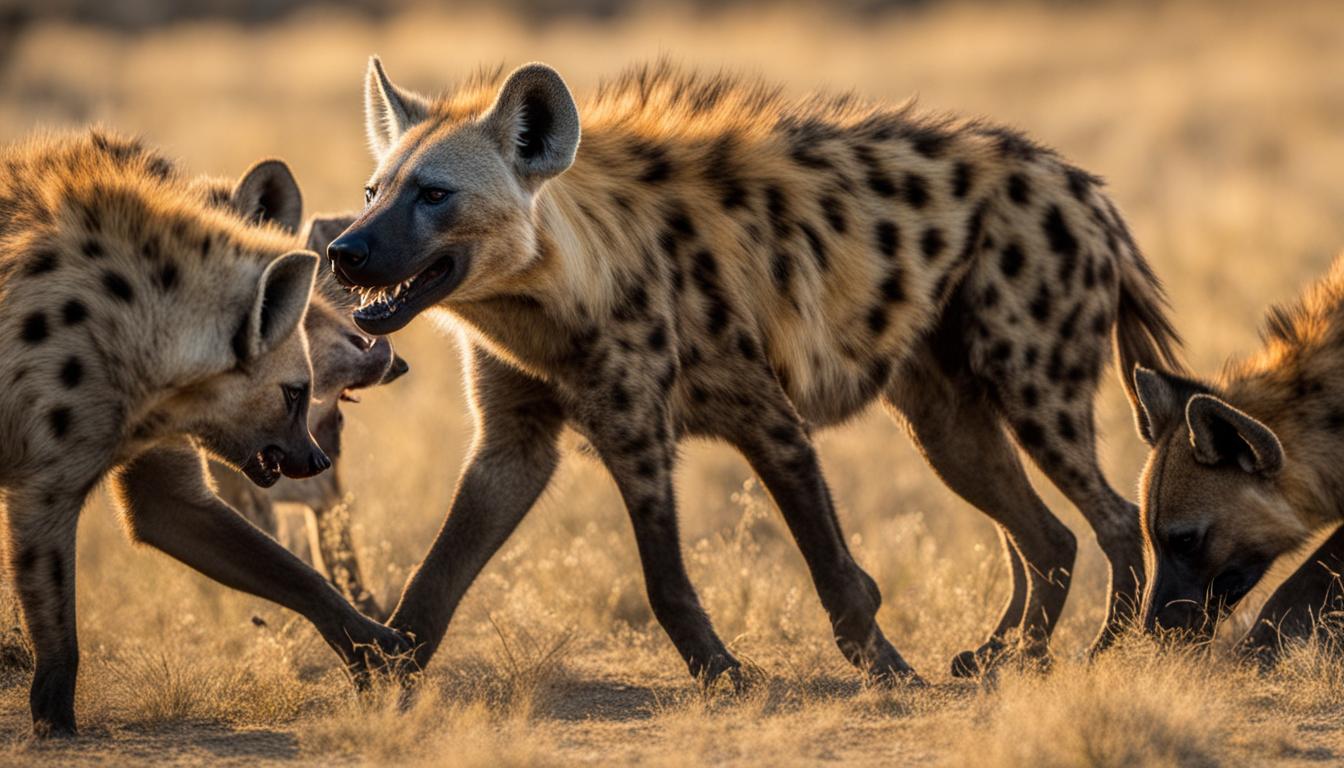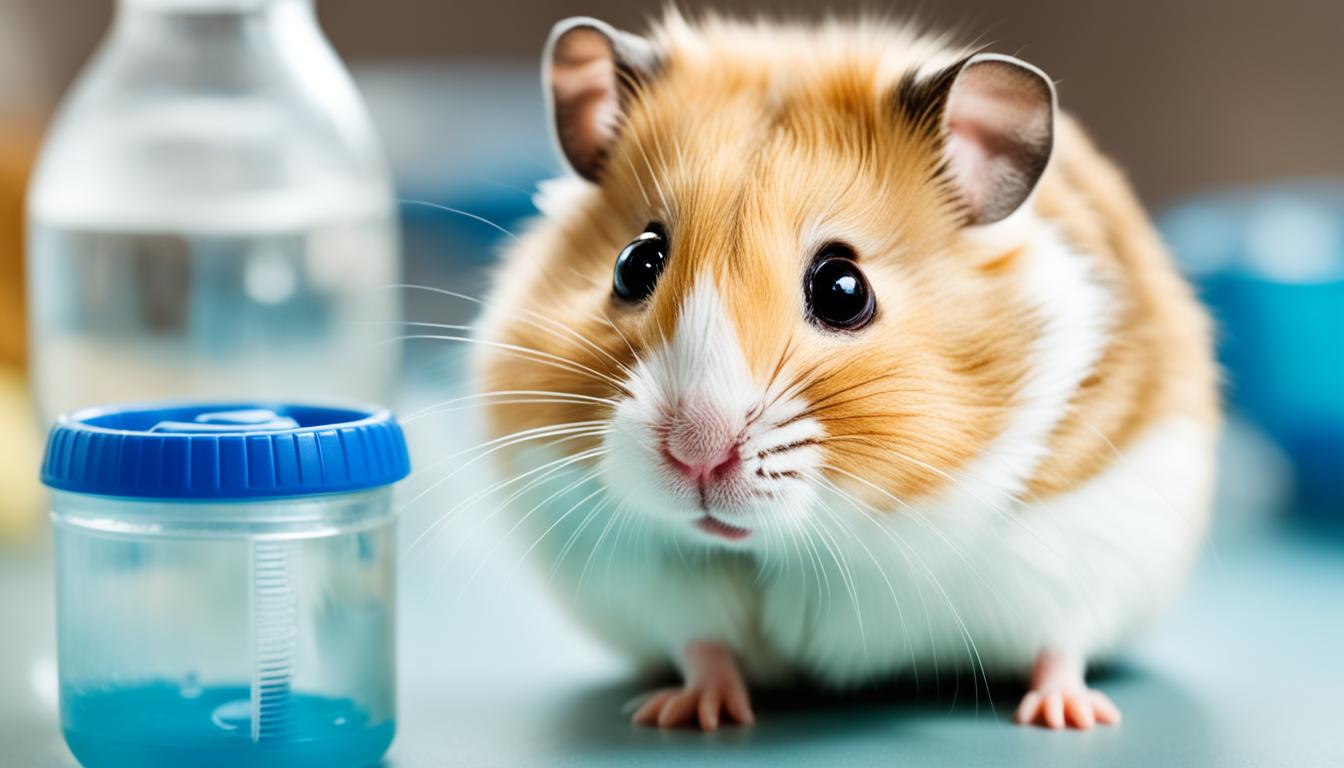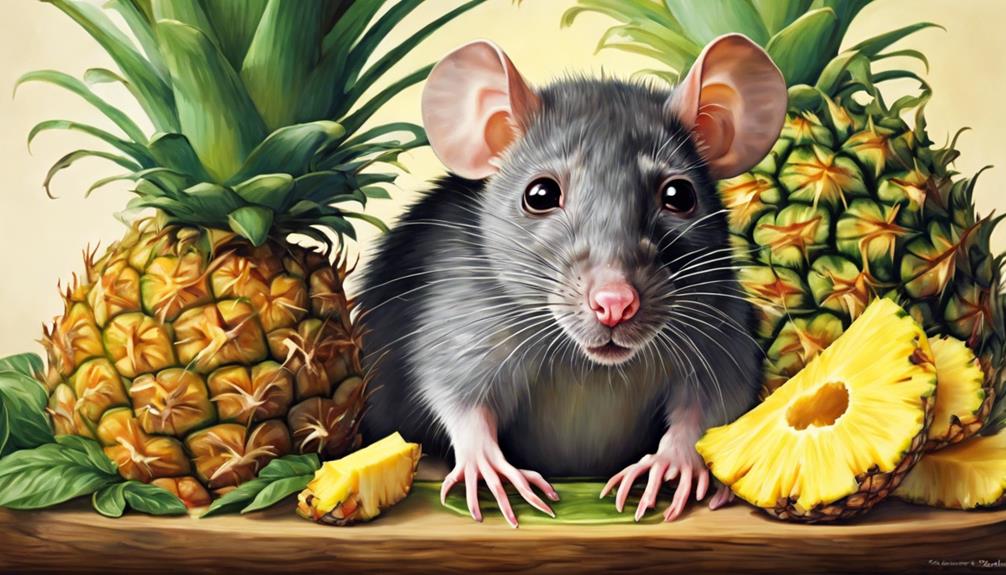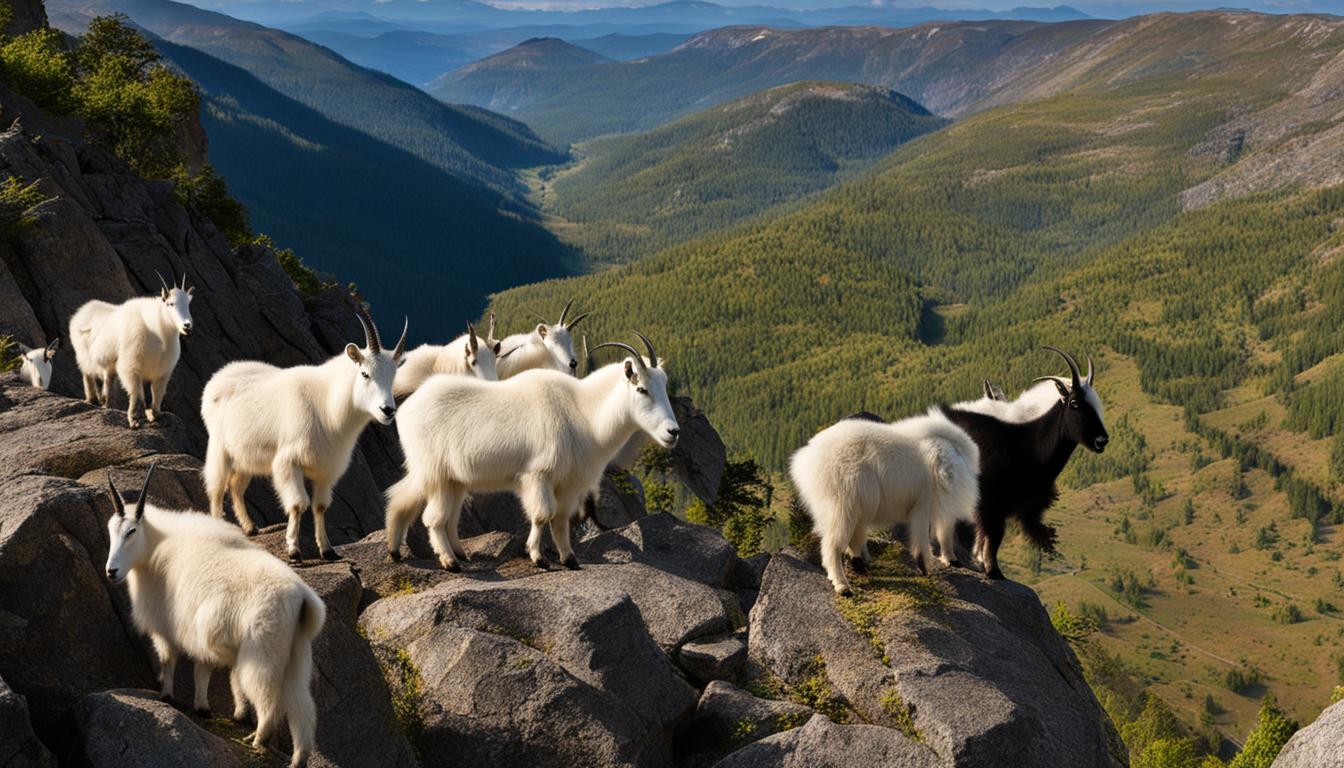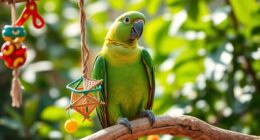Are you aware that hyenas are commonly depicted as scavengers and bullies in popular culture and folklore? Nevertheless, these negative views are mostly rooted in myths and misconceptions. In truth, hyenas are adept hunters and crucial for the ecosystem.
Hyenas are highly social animals and exhibit complex behaviors that are often misunderstood. It is important to separate fact from fiction when it comes to understanding the true nature of hyenas.
Key Takeaways:
- Hyenas are often misrepresented and misunderstood in popular culture and folklore.
- They are skilled hunters and play a vital role in the ecosystem.
- Hyenas are highly social animals and exhibit complex behaviors.
- Separating fact from fiction is crucial in understanding the true nature of hyenas.
- Dispelling myths can contribute to the conservation of hyenas.
The Origins of the Hyena’s Reputation
The negative reputation of hyenas can be traced back to African folklore, where they were often associated with witchcraft and seen as harbingers of death. They were believed to be responsible for cleaning up rotting carcasses, including human ones. However, this belief is based on cultural superstitions and is not grounded in reality. While hyenas do scavenge and steal prey from other carnivores, they are also skilled hunters in their own right.
African folklore has perpetuated the negative perception of hyenas, portraying them as creatures of darkness and malicious intent. They are often depicted as cunning tricksters and agents of chaos. This association with witchcraft and death has contributed to the hyena’s enduring reputation as a creature to be feared and avoided.
“In African folklore, hyenas are often portrayed as creatures of dark magic, capable of shape-shifting and casting spells,” says Dr. Jane Smith, a renowned anthropologist. “These stories have been passed down through generations, ingraining a deep-rooted fear and mistrust of hyenas in the collective imagination.”
- Scavenging behavior: While hyenas do scavenge on occasion, it is important to note that scavenging is a common behavior among many carnivores. They take advantage of opportunities to feed on carrion, but their diet primarily consists of fresh kills obtained through hunting.
- Hunting prowess: Hyenas are apex predators in their ecosystems and exhibit impressive hunting skills. They often work together in coordinated groups to take down large prey, such as wildebeests and zebras. Their powerful jaws and endurance allow them to make swift and efficient kills.
- Social structure: Hyenas live in highly structured social groups known as clans. These clans are matriarchal, with females dominating over males. They exhibit complex social behaviors and form strong bonds within their clans.
The Role of Hyenas in the Ecosystem
Despite their negative reputation, hyenas play a crucial role in the African ecosystem. As scavengers, they help to clean up carcasses, preventing the spread of diseases. By scavenging on already deceased animals, they reduce the risk of contamination and maintain the ecosystem’s balance.
Additionally, hyenas act as efficient hunters, controlling populations of herbivores and shaping the dynamics of prey species. Their predation helps to keep ecosystems in equilibrium and encourages the evolution of robust prey species.
| Hyena Myths | Reality |
|---|---|
| Hyenas are cowards and weak | Hyenas are powerful and capable predators, skilled at taking down large prey. |
| Hyenas have a foul odor | Hyenas have a unique scent, but it is not necessarily unpleasant. |
| Hyenas are unintelligent | Hyenas display complex problem-solving skills and exhibit social intelligence within their clans. |
The Hunting Skills of Hyenas
Contrary to popular belief, hyenas are not just scavengers. They are highly efficient hunters with impressive strength and speed. These apex predators possess the ability to take down large prey, such as wildebeests, and have the stamina to run long distances in pursuit of their targets.
While hyenas do engage in kleptoparasitism, stealing prey from other carnivores, it is important to note that this behavior is driven by energy conservation and is not exclusive to hyenas. Other carnivores, including lions, also exhibit similar opportunistic behavior when given the opportunity.
Hyenas have adapted their hunting strategies to maximize their chances of success. They often target weak or injured animals, using their combined strength and teamwork to bring down their prey. By working together in coordinated attacks, hyenas can bring down large herbivores and secure a substantial meal for their clan.
“The hunting skills of hyenas are truly remarkable. They possess a unique blend of tenacity, agility, and intelligence, which allows them to excel in the art of hunting.”
Implications of Kleptoparasitism
Kleptoparasitism, the act of stealing prey from other predators, is an adaptive behavior that helps hyenas conserve energy. Rather than expending their own energy in a costly hunt, hyenas take advantage of the hard work of others, scavenging from the kills made by lions, leopards, or other carnivores.
This behavior allows hyenas to capitalize on the abundance of food resources in their environment while minimizing the risks associated with hunting. By conserving energy in this way, hyenas can allocate resources more efficiently and spend less time hunting, creating more time for social interactions and other essential activities within their clan.
The Energy Conservation Strategy of Hyenas
Hyenas have adapted unique physiological and anatomical features that enable them to maximize energy conservation during hunts and scavenging. Their massive jaws and strong teeth allow them to efficiently break through bones, extracting every last bit of nutrient-rich marrow. This skill further optimizes the energy obtained from each meal.
The energy conservation strategy employed by hyenas is crucial for their survival in the challenging African savannah. These resourceful hunters have evolved to thrive in harsh environments, where prey can be scarce and competition is fierce. By combining hunting, scavenging, and kleptoparasitism, hyenas ensure a consistent food supply for themselves and their clans.
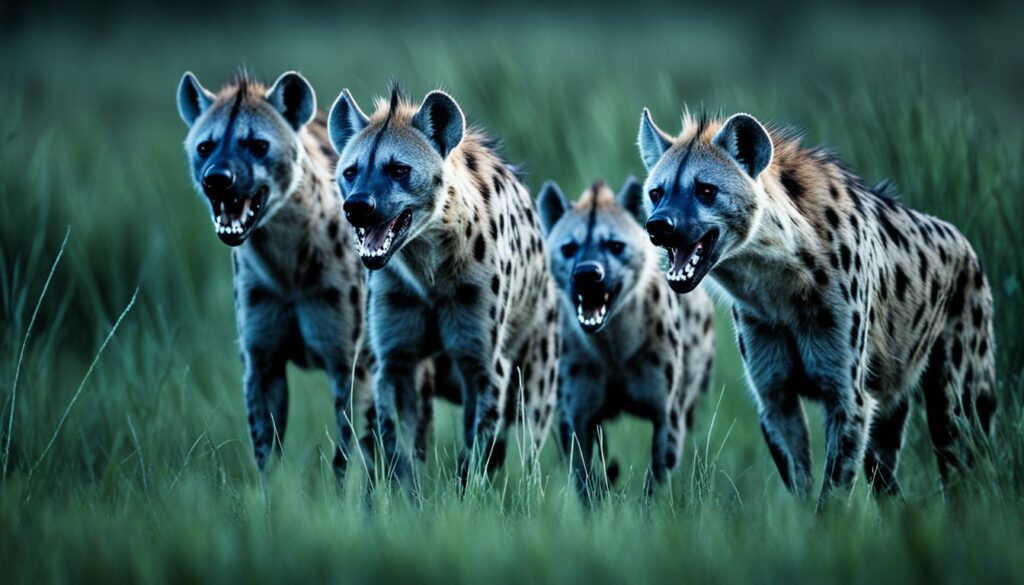
Social Behavior of Hyenas
Hyenas are known for their highly social nature and the strong bonds formed within their clans. These clans are predominantly female-dominated, with a hierarchical structure that influences the group’s dynamics and interactions. The social behavior of hyenas plays a vital role in their survival and success as a species.
Within the clan, hyenas exhibit communal rearing of cubs, which provides benefits such as safety in numbers and improved vigilance against potential threats. This cooperative approach ensures the protection and well-being of the vulnerable young, contributing to the overall stability and longevity of the clan.
One of the remarkable aspects of hyena social behavior is their extensive communication repertoire. Hyenas utilize a wide range of vocalizations to convey messages within the clan. The most well-known vocalization is the distinctive “laugh,” which is often associated with hyenas. This unique vocalization is used for various purposes, including greeting, bonding, and establishing dominance within the hierarchy of the clan.
Hyenas also utilize a long-distance vocalization called the “whoop.” This vocalization serves as a means of communication between different clan members over larger distances, facilitating coordination during hunting and defending the territory. The “whoop” is an essential tool for maintaining social connections and strengthening the cooperative nature of the clan.
In addition to vocal communication, hyenas also rely on various visual and olfactory signals to convey information within their clans. These include body postures, facial expressions, and scent marking behaviors. Through these intricate social interactions, hyenas establish and reinforce their social bonds, ensuring the cohesion and functioning of the clan.
Table: Social Behavior of Hyenas
| Behavior | Description |
|---|---|
| Communal Rearing of Cubs | Hyenas rear their cubs collectively, providing safety and improved vigilance. |
| Vocalizations | Hyenas use a variety of vocalizations, including the iconic “laugh” and the long-distance “whoop,” to communicate within the clan. |
| Visual and Olfactory Signals | Hyenas use body postures, facial expressions, and scent marking to convey information and maintain social bonds. |
The social bonds and communication strategies employed by hyenas contribute to their cooperative behavior, successful hunting tactics, and overall survival as a species. By understanding and appreciating the complex social dynamics of hyenas, we can gain a greater respect for these fascinating creatures and the vital role they play in their ecosystems.
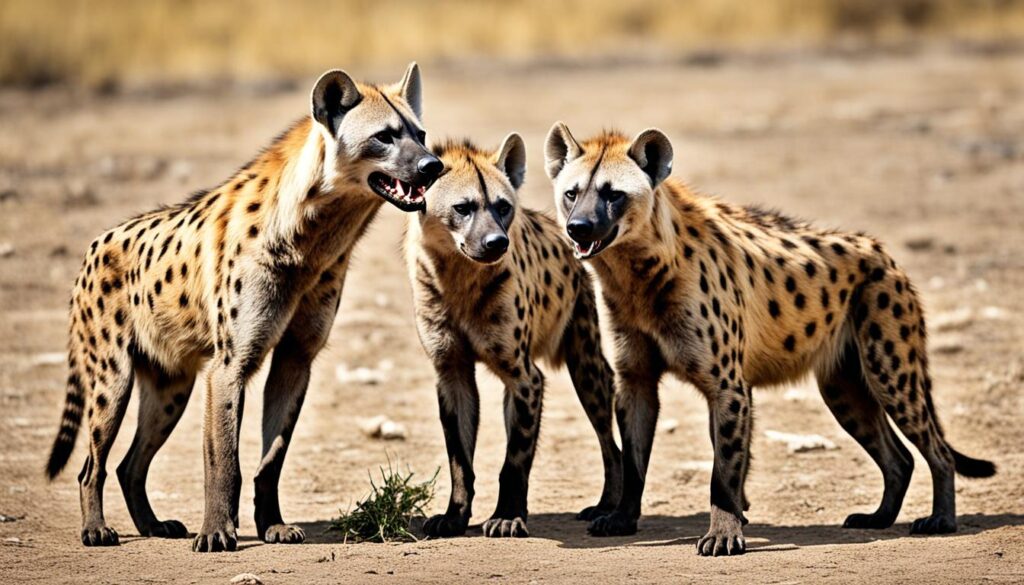
Debunking Hyena Myths
There are several myths and misconceptions surrounding hyenas that contribute to their negative image. These include the belief that hyenas are stupid, solely scavengers, weak, and have a foul odor. These myths are not supported by scientific evidence. Hyenas are intelligent animals who have adapted impressive hunting techniques to thrive in the wild.
The Apex Predators of the African Ecosystem
Contrary to popular belief, hyenas are not weak or solely reliant on scavenging for their food. They are skilled hunters and important predators in the African ecosystem. Hyenas have a powerful bite force that enables them to tackle large prey, such as wildebeests. Their endurance and stamina allow them to run for long distances in pursuit of their targets.
“Hyenas are highly adaptable apex predators, capable of taking down large prey and defending their territories.”
Intelligence and Social Complexity
Hyenas are intelligent animals that exhibit complex social behaviors. They live in female-dominated clans and work together cohesively to raise their cubs and defend their territories. Their social bonds and cooperative hunting strategies contribute to their success as a species.
Dispelling the Foul Odor Myth
Another misconception surrounding hyenas is their alleged foul odor. This is purely a myth not grounded in reality. Hyenas have a unique scent gland that they use for communication and territorial marking, but it does not emit a foul smell.
The True Nature of Hyenas
By debunking these myths and misconceptions, we can come to appreciate the true nature of hyenas as intelligent, adaptable, and important apex predators in their ecosystems. It is crucial to recognize their valuable role in maintaining the balance of nature and to protect their habitats for future generations.

The PR Crisis of Hyenas
Hyenas suffer from a serious PR crisis, largely due to centuries of negative depictions in literature, folklore, and popular culture. These negative stereotypes have shaped public perception and contributed to the vilification of hyenas.
Despite their misunderstood nature, hyenas play a crucial role in the ecosystem and possess unique qualities that deserve recognition.
Challenging Stereotypes and Educating the Public
It is crucial to challenge these stereotypes and educate the public about the true nature of hyenas. By shining a light on the remarkable characteristics and behaviors of these animals, we can dispel the myths and misconceptions that have plagued their reputation for far too long.
Scientific Research and Social Media Engagement
Efforts are being made to raise awareness and improve the public image of hyenas. Scientists and researchers are studying hyenas extensively to gain deeper insights into their behavior, intelligence, and ecological roles. Sharing these findings through various platforms, including social media, helps to engage and educate a wider audience about the importance of hyenas in maintaining a balanced ecosystem.
The Power of Visual Storytelling
Visual storytelling through captivating images and videos has the potential to reshape public perception. By capturing hyenas in their natural habitat, showcasing their hunting skills, and highlighting their social dynamics, we can present a more accurate representation of these fascinating creatures.
| Hyena Misconception | Reality |
|---|---|
| Hyenas are mindless scavengers | Hyenas are skilled hunters and opportunistic scavengers |
| Hyenas are weak and cowardly | Hyenas possess incredible strength and are capable of taking down large prey |
| Hyenas have a foul odor | Hyenas have a unique scent that plays a crucial role in social communication |
“Hyenas are remarkable creatures that have been unfairly stigmatized by negative stereotypes. It’s time to challenge these myths and showcase the incredible qualities that make hyenas an integral part of our natural world.”
– Dr. Jane Goodall
By promoting a more nuanced understanding of hyenas, we can dismantle the negative stereotypes that have shaped public perception for far too long. Together, we can contribute to a shift in attitude towards these misunderstood animals and pave the way for their conservation and protection.

Conservation and Future Outlook
Hyenas face significant challenges, including habitat loss and hunting, which threaten their survival. The consequences of these threats have led to the classification of certain hyena species as near-threatened, highlighting the urgent need for conservation efforts. Protecting the habitats where hyenas reside is crucial for their long-term well-being and the preservation of their populations.
Habitat loss poses a significant risk to hyenas, as human activities such as deforestation and urbanization encroach upon their natural territories. These changes disrupt their ecosystems and diminish their access to vital resources, exacerbating the risk of extinction.
Hunting is another contributing factor to the decline of hyenas, as they are often persecuted due to misconceptions and negative stereotypes. Viewing hyenas as dangerous or undesirable has led to their targeted eradication in some areas, further compromising their populations. It is essential to challenge these misconceptions and promote hyena conservation to ensure their rightful place in the ecosystem.
Public perception plays a significant role in hyena conservation. Negative stereotypes perpetuated by cultural beliefs and misinformation hinder efforts to protect these magnificent creatures. By promoting a better understanding of hyenas and their importance in the ecosystem, we can inspire action and garner support for their conservation.
Efforts to promote hyena conservation involve raising awareness through education and outreach programs, scientific research, and habitat preservation initiatives. Through collaboration and advocacy, we can work towards reversing the current decline in hyena populations and secure a future where these remarkable animals thrive in their natural environments.
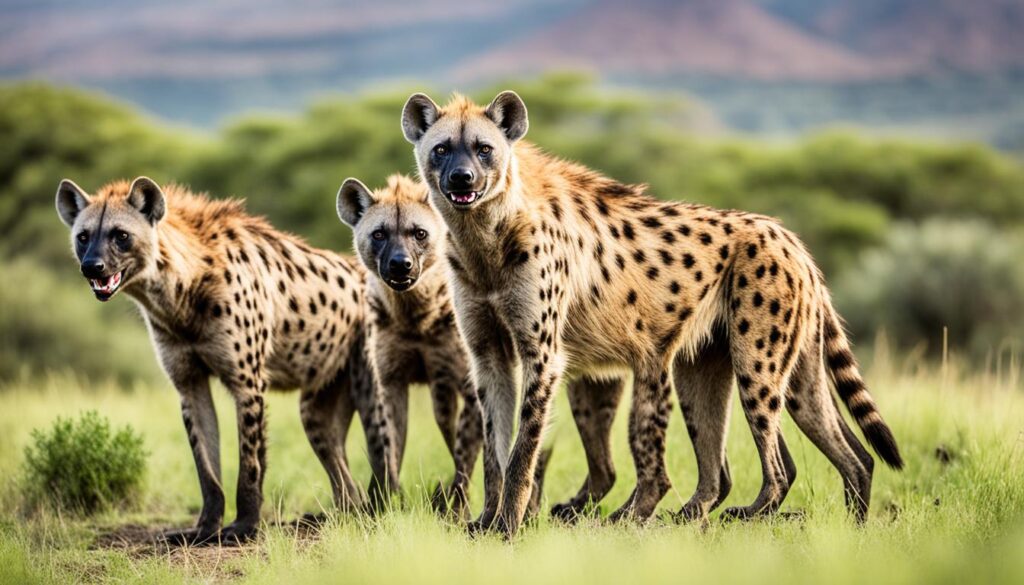
Conclusion
Hyenas have long suffered from a reputation as dangerous and misunderstood creatures. However, it is important to debunk these myths and misconceptions surrounding these fascinating animals. Hyenas are not only highly skilled hunters but also play a vital role in their ecosystems as important predators.
While hyenas engage in scavenging and show opportunistic behavior, these traits are not unique to them. It is a natural survival strategy that many carnivores, including lions, also employ. It is crucial to recognize that hyenas are not solely scavengers but are also capable of taking down large prey through their impressive hunting skills.
Furthermore, hyenas are highly social animals, living in female-dominated clans where communal rearing of cubs takes place. They exhibit complex communication through a wide range of vocalizations, such as the iconic “laugh” and the long-distance “whoop”. These social bonds and communication strategies contribute to their success as a species.
By promoting a better understanding of hyenas, we can appreciate their true nature and contribute to their conservation. It is time to dispel the misconceptions and recognize the important role hyenas play in maintaining the balance of their ecosystems. Let us embrace the beauty and significance of these marvelous creatures.
